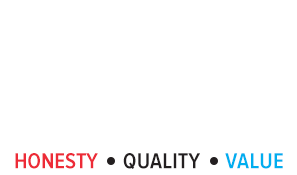Reverse osmosis is a long-standing water purification method that businesses and homeowners have used for decades. You might consider switching to a reverse osmosis system for your home or facility if water cleanliness concerns you. The following is some information about the system and how it works.

What is reverse osmosis?
Reverse osmosis is the backward simulation of a natural process. To understand it, you’ll need to first understand osmosis. Simply put, it occurs during the absorption process. The kidneys, for example, absorb water from our blood. During that process, weaker saline solutions will migrate to solutions with stronger saline concentrations. The same happens when plant roots get their water from the soil.
To reverse this intricate process, the liquid must have pressure applied and be forced through a semi-permeable membrane. That’s reverse osmosis. The solution with the stronger saline content is pushed through a semi-permeable membrane that only allows certain items to pass through.
How does a reverse osmosis system work?
The membrane through which the water passes acts as a filter and only allows water molecules to pass. Therefore, bacteria, pyrogens, dissolved salts, and other items can’t get through. The result is demineralized water.
What are the advantages of a reverse osmosis system?
Many benefits can come to you if you choose to select a reverse osmosis system. One benefit is that a reverse osmosis system can remove numerous contaminants. Arsenic, nitrates, and lead are only a few of the items this type of system can eliminate. You can also eliminate bacteria that are too big to break through and other elements such as fluorides, pesticides, and herbicides.
You might also enjoy better-tasting glasses of water. Many people claim that RO systems leave the water with a clean and crisp taste, unlike the murky taste they get from tap water.
Your household members will be less prone to developing minor and severe illnesses if you filter the water using a reverse osmosis system. Many bacteria will be blocked from passing through the membrane, leaving purer water to support your health.
You might not have thought about the pricing factor, but you can also save money by purchasing an RO system. You will have to submit an initial small investment, but in the end, you’ll reap the benefits of not having to purchase expensive bottled water every week.
Does a reverse osmosis provide drinking water?
Reverse osmosis is highly efficient in providing drinking water. In fact, many people purchase reverse osmosis systems for their homes to eliminate harmful contaminants and provide drinking water for their families. The process differs from distillation because it doesn’t involve boiling water. Furthermore, reverse osmosis is more effective in removing chemical residues and other impurities as well as bacteria and microbes. Any reverse osmosis system can be used to provide drinking water in a home or larger facility.
Consider purchasing a reverse osmosis system for your family members or employees. You’ll have the peace of mind you deserve when drinking from the tap.

